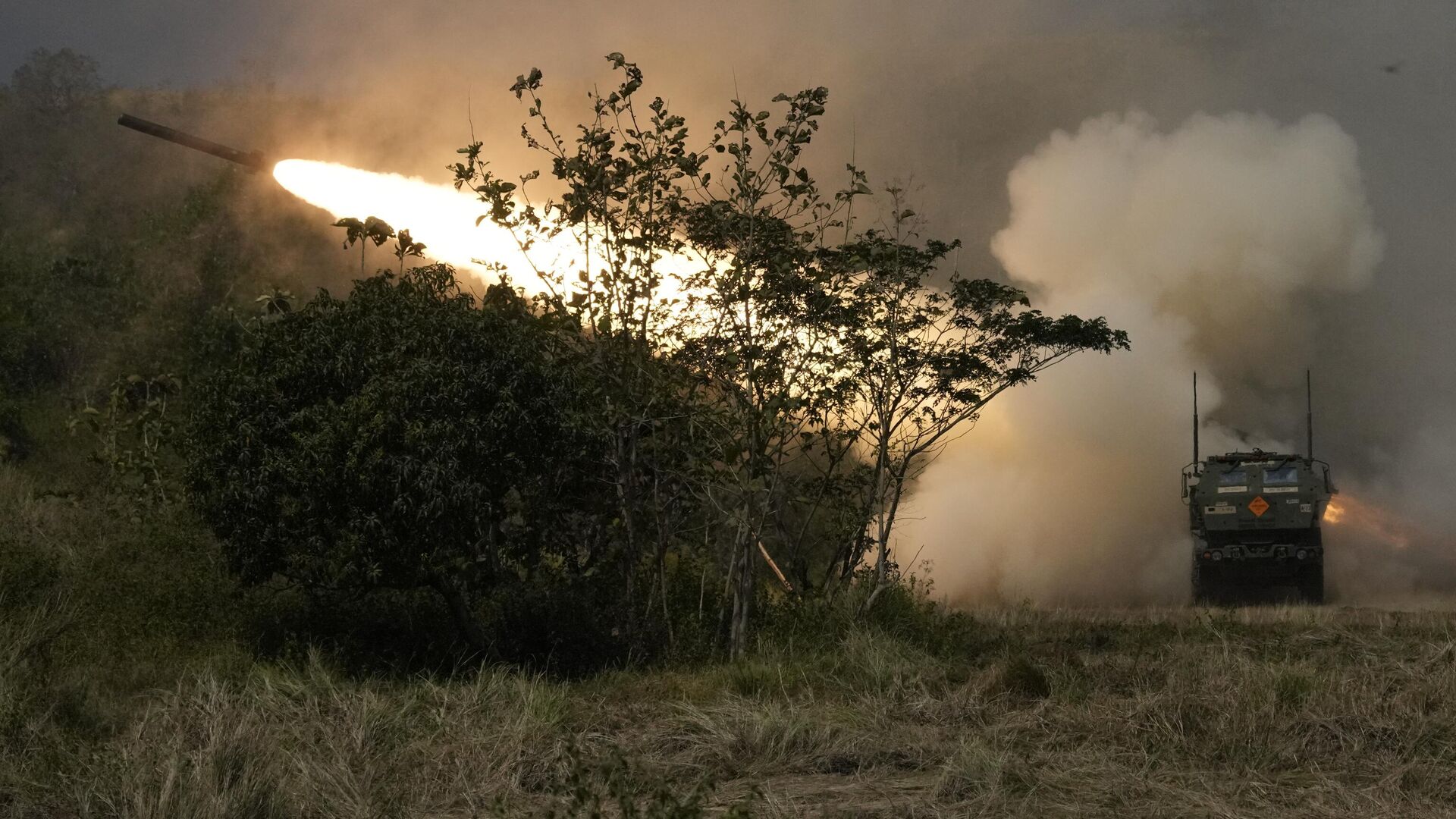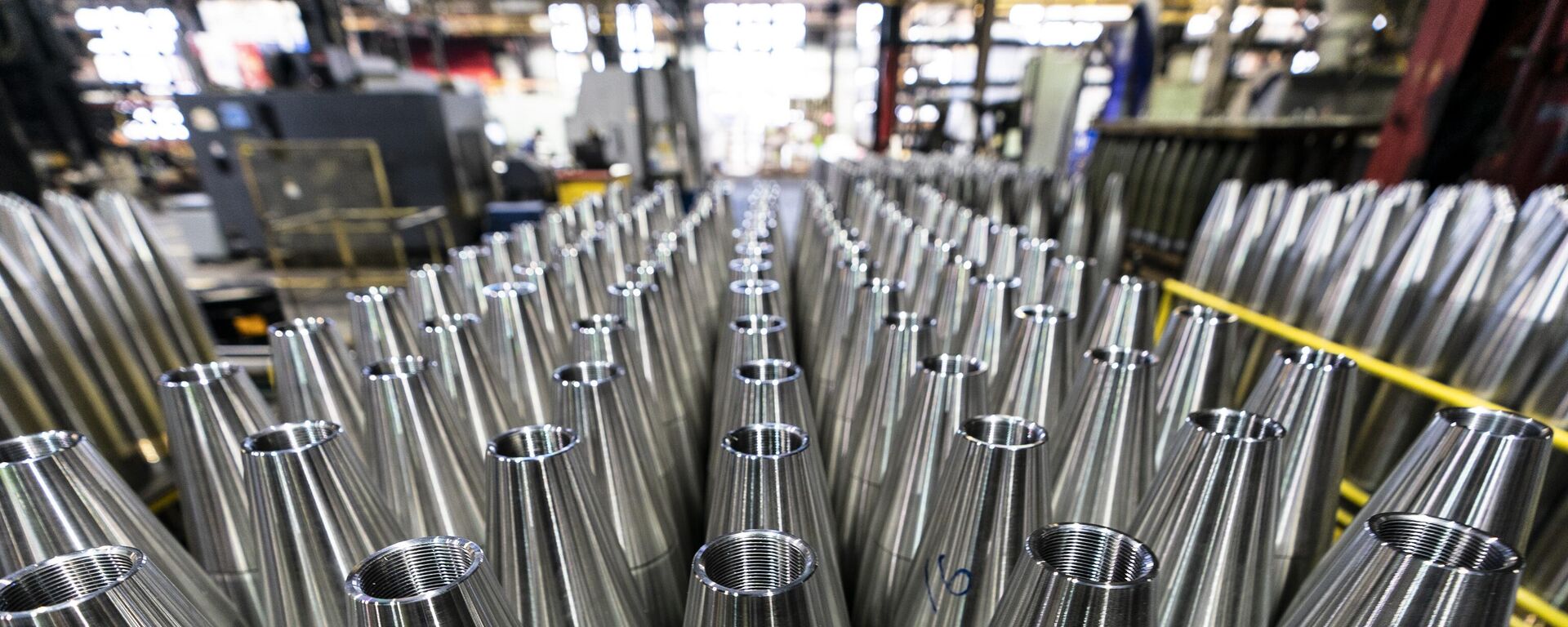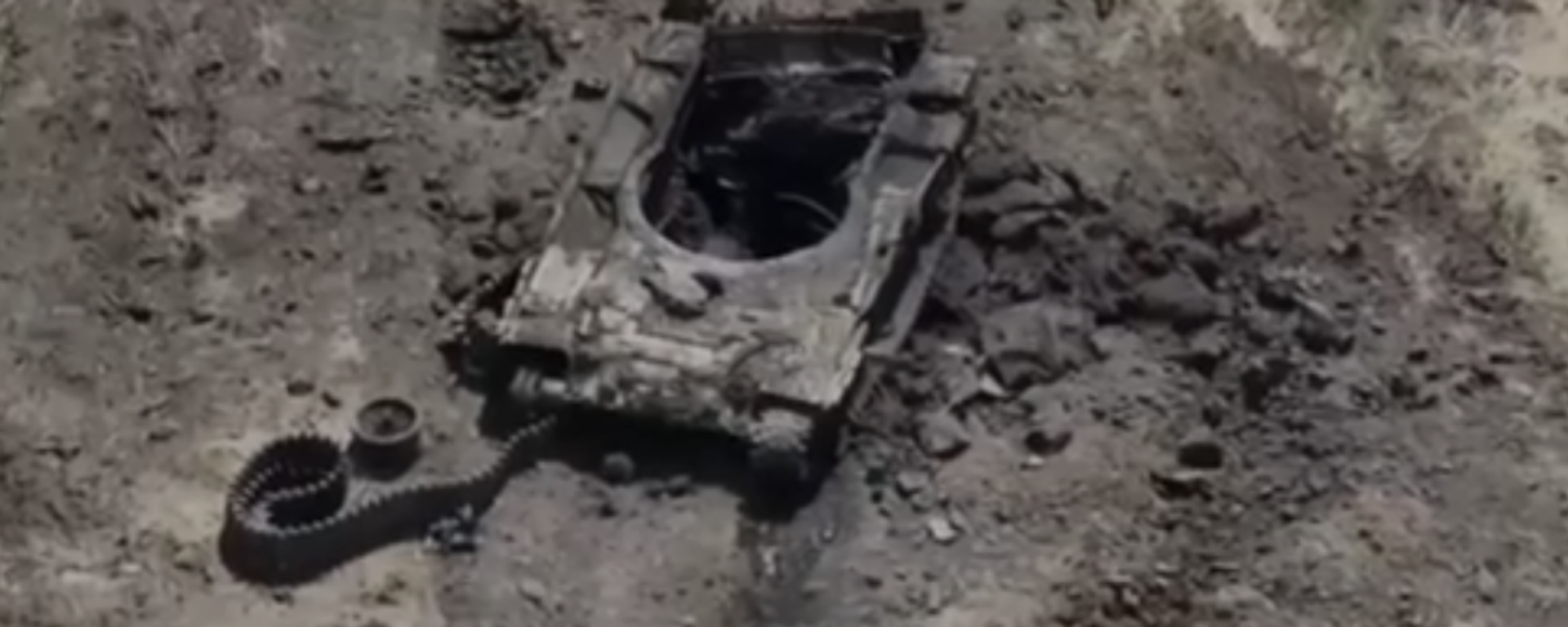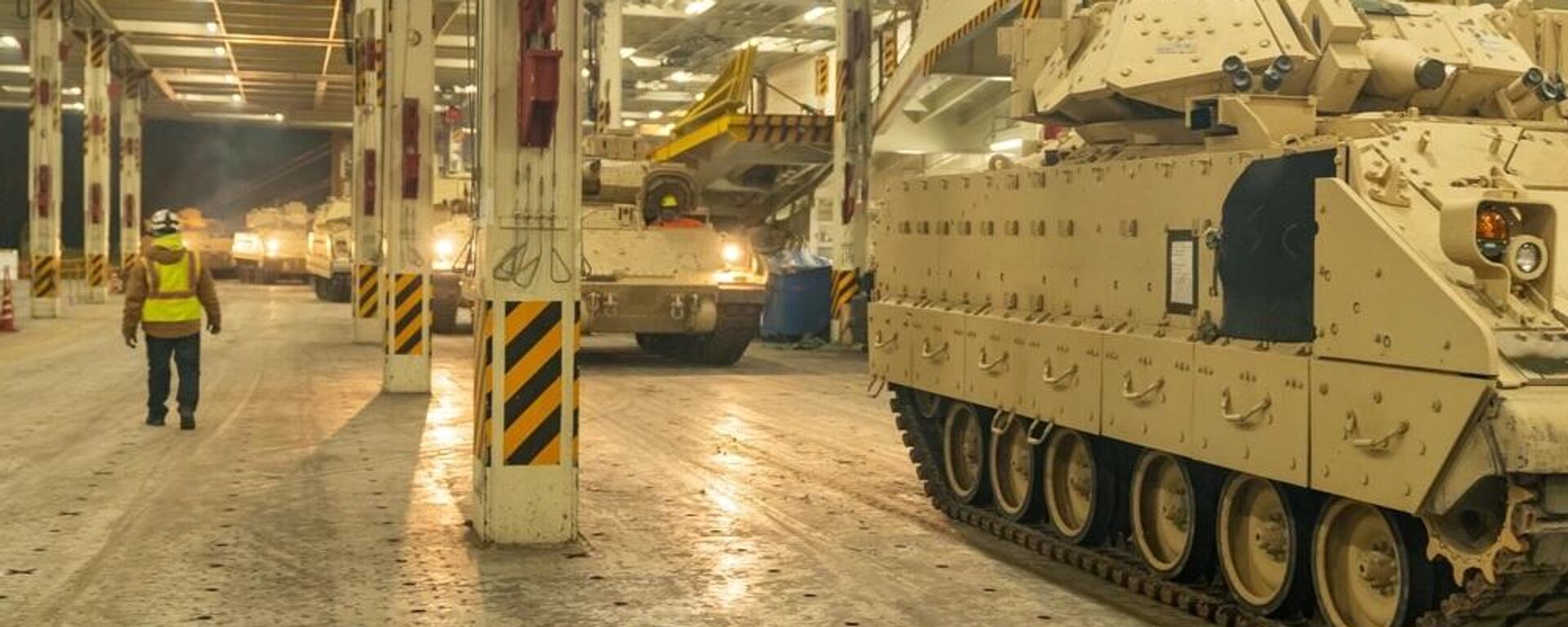https://sputnikglobe.com/20240322/ukraine-lacks-capacity-personnel--resources-to-build-own-himars-1117481893.html
Ukraine 'Lacks Capacity, Personnel & Resources' to Build Own HIMARS
Ukraine 'Lacks Capacity, Personnel & Resources' to Build Own HIMARS
Sputnik International
Ukraine lacks production capacity, trained personnel and resources to start producing High-Mobility Artillery Rocket Systems (HIMARS) on its own soil any time soon, Andrey Koshkin told Sputnik.
2024-03-22T08:11+0000
2024-03-22T08:11+0000
2024-03-22T08:11+0000
analysis
ukraine
himars
high mobility artillery rocket system (himars)
military & intelligence
andrei koshkin
rheinmetall
nato
https://cdn1.img.sputnikglobe.com/img/07e7/04/04/1109106593_0:320:3072:2048_1920x0_80_0_0_3be49a6942169ed2ce0a10b7c29db665.jpg
Ukraine lacks production capacity, trained personnel, and resources to begin producing military hardware like the US-delivered High-Mobility Artillery Rocket Systems (HIMARS) on its own soil any time soon, Andrey Koshkin, a veteran Russian academic specializing in military and international affairs, told Sputnik.Ukraine faces “dwindling numbers of shells, bullets and even soldiers,” The Washington Post recently stated, adding that US intelligence predicted it might may run out of air defense missiles by the end of the month. In light of this, Ukraine is developing air defense systems and high-precision missiles similar to the US-made HIMARS, unnamed Kiev officials were cited as saying. The sources added that such high-tech systems are a long way off from being manufactured in Ukraine, as mastering and building such a production could take “decades.” The same Ukrainian officials reportedly cited “a laundry list of constraints - from lacking adequate financing to finding enough gunpowder - is preventing Ukrainian industry from ramping up production.”As a US aid package for Ukraine worth $60 billion remains stalled in Congress, the Kiev regime has been contending with a growing shortage of ammunition amid a lack of battlefield successes. Furthermore, Russian forces continue to chew through the sophisticated and costly NATO systems delivered to fuel the ongoing proxy war against it.Ukraine is also working with Western companies like Germany’s Rheinmetall and Britain’s BAE Systems. In February, Rheinmetall agreed on a joint venture to produce 155 mm shells and propellants, The Washington Post added, as Ukrainian defense industry representatives are considering launching domestic NATO-standard 155 mm shells production. However, this is not likely to get off the ground until "the second half of this year."“The West is interested in developing military production in Ukraine, including production of 122, 152, 155 mm artillery shells, small arms, ammunition for them, cartridges, and grenades. They would even like to expand the production of tanks. But this is a highly debatable issue, because currently Paris and Berlin cannot decide among themselves which tank to opt for as the main battle tank for Europe,” said Andrey Koshkin, who is also an expert at the Association of Military Political Scientists.The pundit was referring to a German-French joint tank project that would see the German Leopard and French Leclerc replaced by the MGCS main battle tank, yet there are ongoing rivalries between the companies involved.German weapons manufacturer Rheinmetall AG's Chief Executive Armin Papperger stated last year that the company expected to build its first armored vehicles in Ukraine by the beginning of 2024. The deal with Kiev was to cover the construction of the Fuchs armored transport vehicles and Lynx infantry fighting vehicles. At the time, pundits told Sputnik that the project was a highly doubtful one, but could be "attractive in terms of money laundering.” Weighing in on whether Western countries are ready to transfer their military production technologies to Ukraine from a security point of view, the expert suggested that to some extent, certain outdated technologies might be shared.Regarding the list of weapons that Ukraine is currently able to produce independently, one should bear in mind that, to a large degree, the country’s economy and military-industrial complex are “in a state of collapse,” Koshkin said.“They have tried to renew everything that Ukraine produced in Soviet times… They are currently 90% self-sufficient in aerial vehicles, but these are small production facilities numbering from 10 to 30 people. They produce from a thousand to a maximum of 10,000 drones per month," the pundit said.He noted that Ukraine was frantically trying to "repair something, modernize something, produce something on its own." But most importantly, "they need to organize the production of 155 mm artillery shells."As the proxy conflict drags on, Western countries are enriching their military-industrial complex at the expense of Ukraine. There could be two models of interaction between Ukraine and Western countries in the sphere of military production in the country. Ukraine may be allowed to produce something independently, or produce weapons jointly with other countries/foreign companies. But this is “not so simple and easy to do,” Koshkin reiterated.
https://sputnikglobe.com/20240320/ukraine-will-start-production-of-155-mm-caliber-shells-only-in-second-half-of-2024---report-1117446124.html
https://sputnikglobe.com/20231202/why-rheinmetalls-proposed-armored-vehicle-production-in-ukraine-is-infeasible-1115346238.html
https://sputnikglobe.com/20240304/abrams-himars-nasams-and-iris-ts-list-of-pricey-nato-weapons-russia-has-destroyed-in-ukraine-1117124676.html
https://sputnikglobe.com/20240319/us-military-industrial-complex-jacks-up-prices-amid-ukraine-proxy-war-heres-by-how-much-1117424271.html
https://sputnikglobe.com/20240317/ukraine-conflict-natos-going-to-suffer-defeat-in-proxy-war-with-russia--analyst-1117387302.html
ukraine
Sputnik International
feedback@sputniknews.com
+74956456601
MIA „Rosiya Segodnya“
2024
News
en_EN
Sputnik International
feedback@sputniknews.com
+74956456601
MIA „Rosiya Segodnya“
Sputnik International
feedback@sputniknews.com
+74956456601
MIA „Rosiya Segodnya“
himars, can ukraine produce himar, high-mobility artillery rocket systems, how many himars does ukraine have, what nato weapons have been lost in ukraine, what nato weapons has russia destroyed in ukraine, proxy war,
himars, can ukraine produce himar, high-mobility artillery rocket systems, how many himars does ukraine have, what nato weapons have been lost in ukraine, what nato weapons has russia destroyed in ukraine, proxy war,
Ukraine 'Lacks Capacity, Personnel & Resources' to Build Own HIMARS
As NATO countries have hesitated to further boost assistance to Kiev, Ukrainian President Volodymyr Zelensky blasted his Western partners for the “unacceptable” holdup in the delivery of new arms assistance. Meanwhile, reports have indicated that Ukraine is hoping to ramp up military production on its own soil.
Ukraine lacks production capacity, trained personnel, and resources to begin producing military hardware like the
US-delivered High-Mobility Artillery Rocket Systems (HIMARS) on its own soil any time soon,
Andrey Koshkin, a veteran Russian academic specializing in military and international affairs, told
Sputnik.
“These plans might get off the ground in 10-15, or even 20 years… It is a very difficult task, and not something that can be up and running any time soon. They are making an attempt to expand local [military] production, of course, attempting to subsidize it… But it will take a long time to master the technology,” the retired colonel said.
Ukraine faces “
dwindling numbers of shells, bullets and even soldiers,”
The Washington Post recently stated, adding that US intelligence predicted it might may run out of air defense missiles by the end of the month. In light of this,
Ukraine is developing air defense systems and high-precision missiles similar to the
US-made HIMARS, unnamed Kiev officials were cited as saying. The sources added that such high-tech systems are a long way off from being manufactured in Ukraine, as mastering and building such a production could take “
decades.” The same Ukrainian officials reportedly cited “
a laundry list of constraints - from lacking adequate financing to finding enough gunpowder - is preventing Ukrainian industry from ramping up production.”
The United States has donated 39 High-Mobility Artillery Rocket Systems, or HIMARS, to Ukraine. The wheeled rocket launchers fire GPS-guided 227 mm M30/31 rockets.
As a US aid package for Ukraine worth $60 billion
remains stalled in Congress, the Kiev regime has been contending with a growing
shortage of ammunition amid a lack of battlefield successes. Furthermore, Russian forces continue to chew through the sophisticated and costly NATO systems delivered to fuel the ongoing
proxy war against it.
Ukraine is also working with Western companies like Germany’s Rheinmetall and Britain’s BAE Systems. In February, Rheinmetall agreed on a joint venture to produce 155 mm shells and propellants, The Washington Post added, as Ukrainian defense industry representatives are considering launching domestic NATO-standard 155 mm shells production. However, this is not likely to get off the ground until "the second half of this year."
“The West is interested in developing military production in Ukraine, including production of 122, 152, 155 mm artillery shells, small arms, ammunition for them, cartridges, and grenades. They would even like to
expand the production of tanks. But this is a highly debatable issue, because currently Paris and Berlin cannot decide among themselves which tank to opt for as the main battle tank for Europe,” said Andrey Koshkin, who is also an expert at the Association of Military Political Scientists.
The pundit was referring to a German-French joint tank project that would see the German Leopard and French Leclerc replaced by the MGCS main battle tank, yet there are ongoing rivalries between the companies involved.
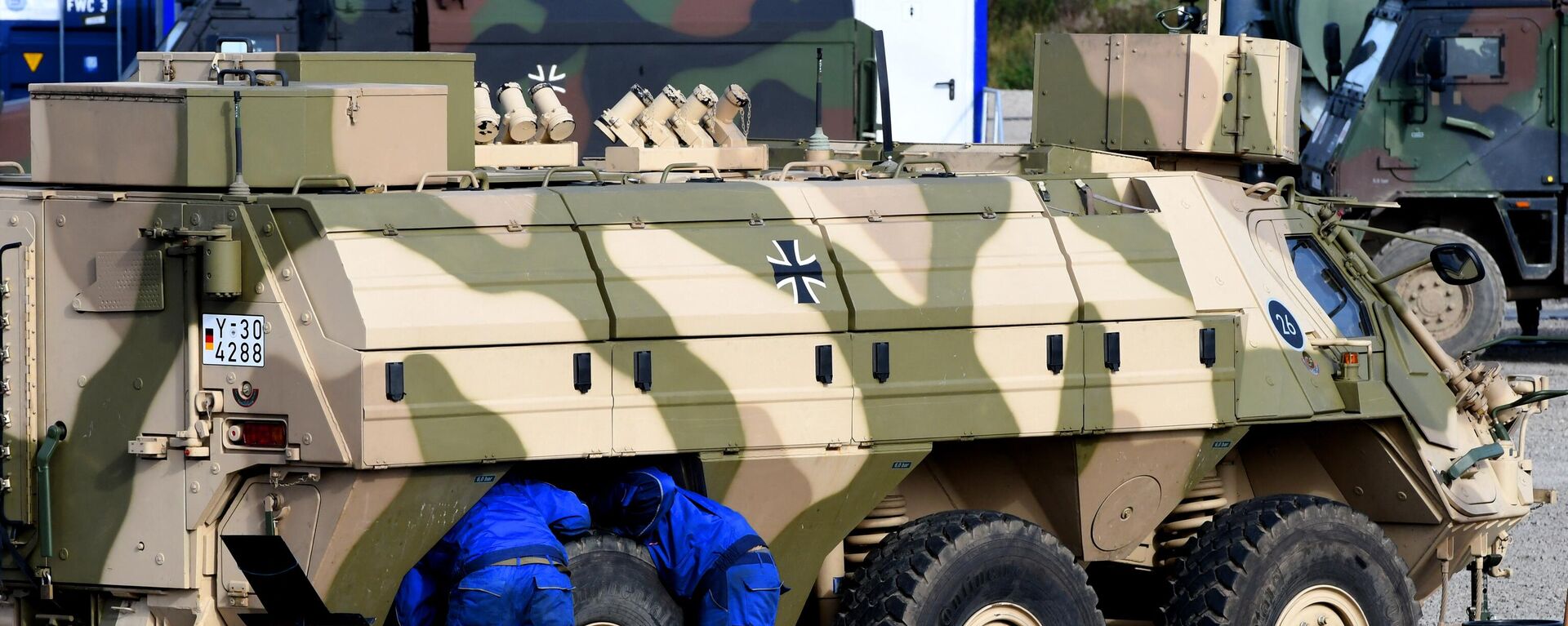
2 December 2023, 14:39 GMT
German weapons manufacturer Rheinmetall AG's Chief Executive Armin Papperger stated last year that the company expected to build its first armored vehicles in Ukraine by the beginning of 2024. The deal with Kiev was to cover the construction of the Fuchs armored transport vehicles and Lynx infantry fighting vehicles. At the time,
pundits told Sputnik that the project was a highly doubtful one, but could be "
attractive in terms of money laundering.”
“Of course, the West would like to see an entire production facility built on Ukrainian territory, but there are difficulties... Although Rheinmetall promised to build a tank production facility by the summer, then they pushed the date back… So far all this is yet to get beyond the ‘attempts and aspirations’ stage. The West has not built such real production capacities, and Ukraine does not have them,” Koshkin underscored.
Weighing in on whether Western countries are ready to transfer their military production technologies to Ukraine from a security point of view, the expert suggested that to some extent, certain outdated technologies might be shared.
“But there would be a specific caveat: that they will be under their [the West’s] control and that this production will be geared exclusively for this proxy conflict. The West, of course, will not transfer more serious, high-tech, costly or promising technologies, because it is not at all convinced that it will be able to keep Ukraine under control.”
Regarding the list of weapons that Ukraine is currently able to produce independently, one should bear in mind that, to a large degree, the country’s economy and military-industrial complex are “in a state of collapse,” Koshkin said.
“They have tried to renew everything that Ukraine produced in Soviet times… They are currently 90% self-sufficient in aerial vehicles, but these are small production facilities numbering from 10 to 30 people. They produce from a thousand to a maximum of 10,000 drones per month," the pundit said.
He noted that Ukraine was frantically trying to "repair something, modernize something, produce something on its own." But most importantly, "they need to organize the production of 155 mm artillery shells."
"Trouble is that these shells are for Western systems. This already requires a complicated production process that Ukraine is not yet ready for; plus, they have a shortage of trained personnel. Don’t forget that, say, out of six mechanics, five have received a draft summons,” the retired colonel said.
As the proxy conflict drags on, Western countries are enriching their military-industrial complex at the expense of Ukraine. There could be two models of interaction between Ukraine and Western countries in the sphere of military production in the country. Ukraine may be allowed to produce something independently, or produce weapons jointly with other countries/foreign companies. But this is “not so simple and easy to do,” Koshkin reiterated.
"Russia is constantly carrying out precision strikes targeting everything that might increase the combat potential of the Ukrainian Armed Forces. The weapons supplied by Western states are also Russia’s targets. So we are precisely opposing the unfolding of this [military production] process,” Andrey Koshkin underscored.
